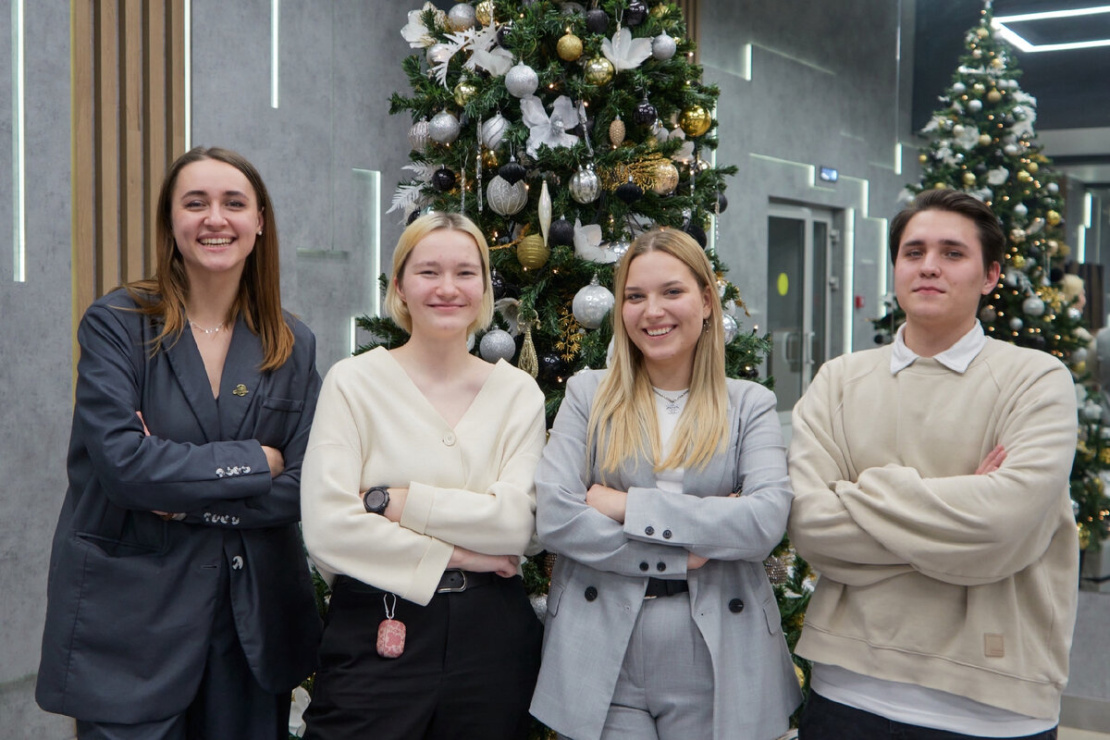“The main goal is assistance to students”: Chairman of the Trade Union Committee of Moscow Polytech talks about youth movement.


Moscow Polytech offers four types of extracurricular activities with more than a thousand of students involved. Most of them are engaged in social activities. In preparation to the Student’s Day, we talked to Nikolay Nitkin, Chairman of the Trade Union Committee of the University, about the emergence of the youth movement, the development of Trade Union’s activities, and the importance of this organization for students and the University.
When did the student union start its work?
The student trade union movement in our country has been active for more than 100 years, and we celebrated the centennial anniversary in 2019. At Moscow Polytech, the student trade union has been developing since early 90s. Of course, I did not live in those times, but I have been a member since mid-90s. The trade union then was the only organization that offered extracurricular life for students.
In those times, the KVN movement (club of cheerful and resourceful students) was popular. It motivated students to expand its activities across the University. This movement was very popular among Moscow-based universities, like the volunteer movement today.
Didn’t the student leisure time end at KVN?
Of course, not. Sports has always been popular. In particular, mass sports - football, volleyball, basketball and table tennis. Interuniversity competitions were very popular, and they were organized by the Moscow Trade Union Organization.
How did the trade union become part of the university’s structure?
At the end of 90s, the Extracurricular Activities Department was established, and then transformed into the Department of Educational and Social Work. At the same time, student life was organized not only at the University, but in dormitories as well. Students organized their own councils, which offered leisure activities in dormitories.
That is, the activity of the trade union inluded organizing student leisure activities?
Not only. For example, in most universities-partners, which later merged with the Moscow Polytechnic University, university newspapers were published. At present, we have Polytech Media, having emerged from three student mass media sections, which also inclluded the trade union media.
The student movement among construction teams should be separately noted. We can see the main result of their activity at the main campus - in front of the main building of Moscow Polytech at Bolshaya Semyonovskaya Street. It is the monument in commemoration of those, who died in the Great Patriotic War.
Which areas of student leisure activities were the most successful?
Many of them, but one of those bright achievements is worth noting. At the University, there was a KVN team, which participated in the Top League performance (shown on TV). It was the national team of Moscow universities formed on the basis of MAMI University (later merged with Moscow Polytech).
The team became a Russia’s bronze prizewinner. We can also recall a recent great achievement of the women's mini-football team. Originally, it included only university’s students. However, legionnaires or alumni representatives joined the team later. It has already grown into a professional team, which participate in all-Russia and International competitions and win at various stages.
What has been interesting to students in the last decade?
Since 2010 and up to 2019, before pandemic, a tourists club has developed well, which conducted its tourist gatherings. The number of participants on such trips reached up to 200-300 students. Those creative teams that began to emerge during the period of KVN's popularity have grown into professional creative teams: a creative workshop, a dance team, a vocal ensemble. Of course, the trade union activities are diverse. These include student’s proms, training for activists, field events at the University and beyond, participation in competitions, activities on the boards of dormitories. The trade union is engaged in all this and a lot more.
How has the concept of a "student union" transformed from the moment this concept appeared to the present day?
The trade union has always represented the interests of students. It is just that these interests are changing: earlier it was leisure activities, now these stay, but it is also the legal protection of students, the provision of social support, participation in scholarship and disciplinary commissions. However, as it has always been, the main goal of the trade union is assistance to students.
What is the importance of the trade union organization at the university, because not all universities have it?
Yes, not in all of them. In Moscow, there are 42 trade union organizations, not in every university they are available. The trade union is a student union, which gives students an opportunity for self-realisation, to receive new skills and competencies, if necessary, to get legal support and protection of interests from the university administration. This also ncludes the provision of social and material support. All this helps the student to feel not alone at the university, to feel a member of a bigger community.
This includes the concept of the "student asset", which includes the students, who represent university at competitions, conferences and other similar events. The University is proud of such victories of students.
How many students are currently members of Moscow Polytech’s trade union?
Around 8,5 thousand, which makes up 84% of all students.
Are there union members, who upon graduation from the University continue their social activity?
Yes, there are such people. Our alumni work in the project “Russia is the country of opportunities”, they run library centers in Moscow districts or work with schoolchildren in the Ministry of Education or the Government of Moscow. The fact is that at the age of 18 it is hard for students to confidently define their profession for the future; therefore, we are very glad that the trade union becomes not only a union, but also a place for student career guidance.










